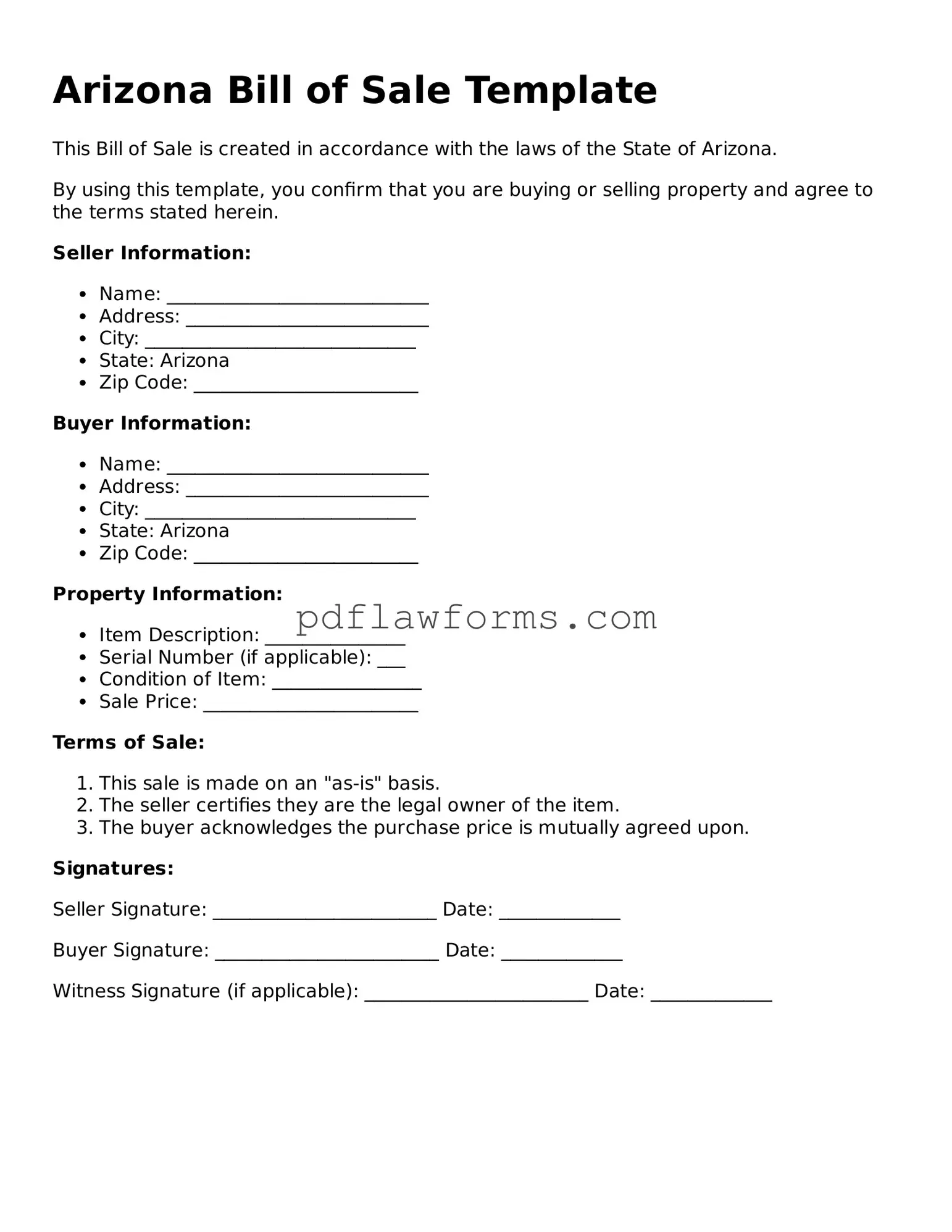Filling out the Arizona Bill of Sale form can seem straightforward, but many people make common mistakes that can lead to complications later. One frequent error is failing to provide complete information about the buyer and seller. Both parties should include their full names, addresses, and contact details. Omitting any of this information can create confusion or disputes down the line.
Another mistake is not accurately describing the item being sold. It is essential to include specific details, such as the make, model, year, and Vehicle Identification Number (VIN) for vehicles. If these details are vague or incorrect, it can lead to misunderstandings about the ownership and condition of the item.
Some individuals forget to include the sale price. This detail is crucial for both parties and for any future legal purposes. Leaving this blank can create uncertainty regarding the transaction and may complicate tax matters.
Additionally, many people neglect to sign the document. Both the buyer and seller should sign the Bill of Sale to validate the transaction. Without signatures, the form may not hold up in a dispute, and the sale could be called into question.
Not dating the form is another common oversight. The date of the transaction is important for record-keeping and legal purposes. A Bill of Sale without a date may be seen as incomplete or invalid.
Some individuals mistakenly assume that a witness or notary is not necessary. While it may not be required for every transaction, having a witness or notary can add an extra layer of protection and authenticity to the document.
Moreover, people often fail to keep a copy of the Bill of Sale for their records. It is wise for both the buyer and seller to retain a copy of the signed document. This can serve as proof of the transaction and help resolve any future disputes.
Lastly, many overlook the importance of understanding local laws regarding Bill of Sale forms. Each state may have specific requirements or regulations. Not being aware of these can lead to issues with the transaction or ownership transfer.
